Hurricane Helene and the Ecological Impacts on the Appalachian Trail
December 5, 2024
When Hurricane Helene made landfall, its powerful winds and heavy rainfall caused widespread destruction, not only to the Appalachian Trail and the nearby communities, but also throughout the natural lands that define the Southern Appalachians. As communities, organizations and public agencies came together in the aftermath, it became clear the urgent need for recovery and resilience in both human and ecological systems.
The first priority in storm recovery is always people. When it was time to turn our attention to the A.T., it became evident that while the clearing and repairing of the treadway and Trail infrastructure would take weeks, months and even years, the ecosystems surrounding the Trail are facing challenges that will affect them for decades. Addressing the storm’s ecological impacts including the spread of invasive non-native plant species, increased fire danger, and destruction of critical wildlife habitats are essential to restoring the A.T. landscape. The Appalachian Trail Conservancy is committed to addressing these ecological issues while supporting the communities that rely on the Trail and its surrounding lands.
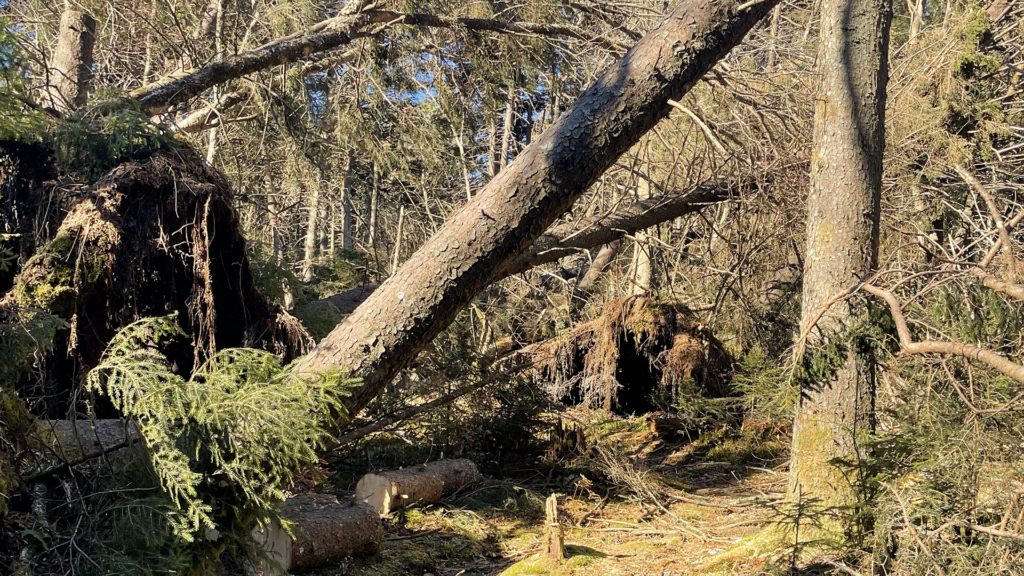
Photo by Anne Sentz shows Hurricane Helene damage near Unaka Mountain.
Invasive Species
Hurricane Helene’s disruption of the A.T. corridor could accelerate the spread of invasive species, which are already a significant problem for the Trail. Matt Drury, ATC’s Associate Director of Science and Stewardship, explains how invasive plants contribute to the forest’s deterioration:
“Non-native invasive species can support a couple of insects, but native plants can support hundreds. For example, oaks can support 800 different insect species, while some invasive trees might support only two or three. When invasive species begin to dominate a habitat, that disruption in the food web silences the forest—fewer insects mean fewer birds. It’s a quiet, heartbreaking loss.”
The hurricane’s winds and rains uprooted and damaged many native plants and caused disruption and displacement of soils. Invasive species will quickly take advantage of newly disturbed areas, and in many cases their seeds may have been lying dormant and waiting for the conditions they need to flourish (space and sunlight) that are brought by disturbance. These fast-spreading plants out-compete native species, disrupting the entire food web and diminishing the forest’s ability to recover. This creates a vicious cycle that endangers the delicate balance of life along the A.T. Much of the ATC’s invasive species monitoring work will focus on heading off the spread of invasive plant species before they gain new footholds in the springtime.
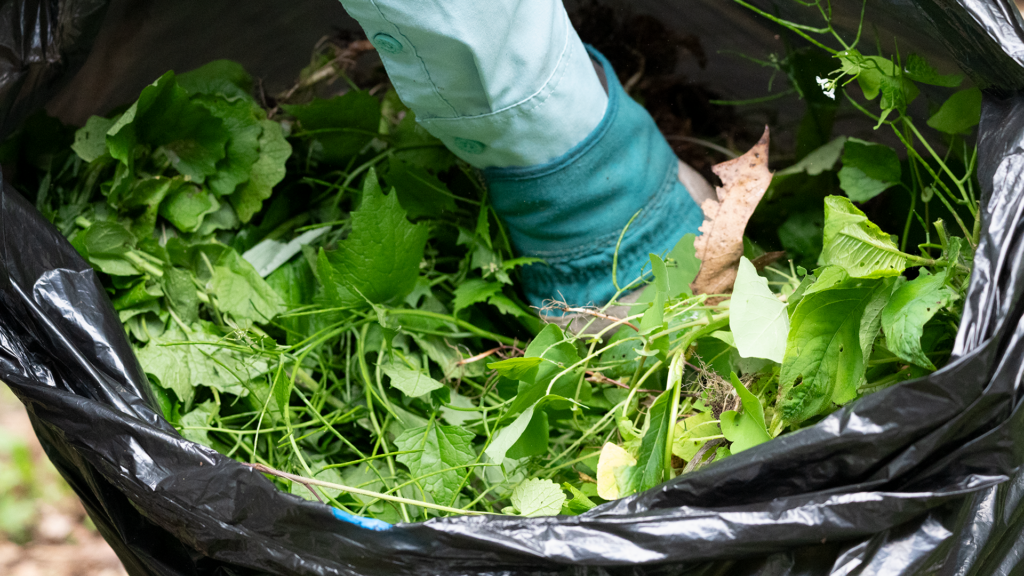
Photo by Allen Meyers shows invasive plant removal.
Fire Danger
The hurricane also exacerbated the danger of severe fires along the A.T. The strong winds and rain from Helene caused massive blowdowns of trees. As the dead, down trees begin to dry out, they will become fuel for wildfires. This increases the risk of wildfires, particularly in areas where drought and climate change have already heightened fire danger. This risk will persist for many years because of the amount of fuel created by the hurricane.
Not only does the potential for hotter, larger and more frequent wildfires have ecological impacts on the species that live in forest communities, but it has human impacts as well. As more people recreate and live near wild areas, severe fires pose a significant threat to the communities, health, and local economies.
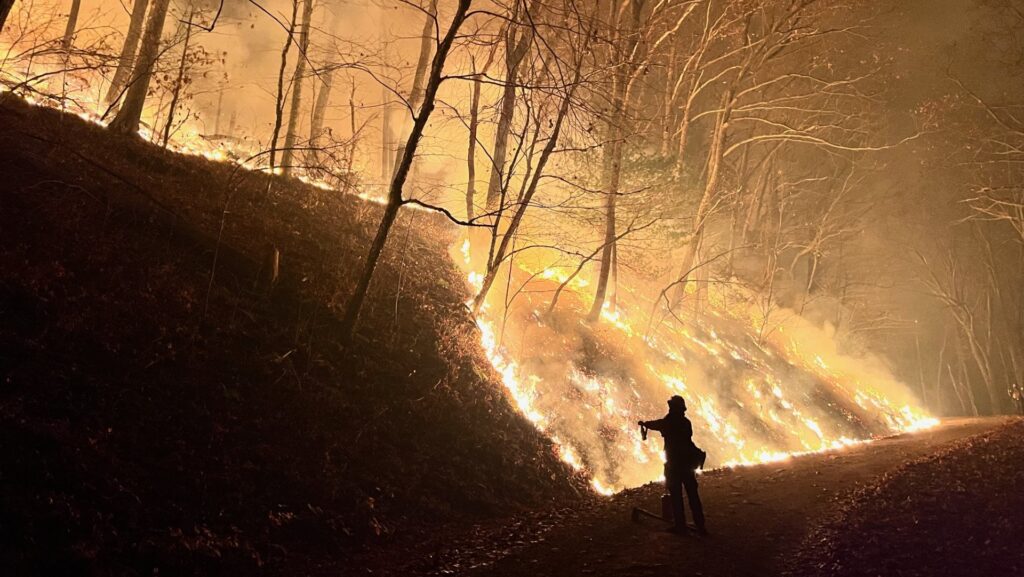
Matts Creek Fire photo courtesy of the U.S. Forest Service.
Magnifying Existing Vulnerabilities
Hurricane Helene did more than just damage the landscape—it highlighted the vulnerabilities that already existed. For example, high-elevation areas, which are crucial for certain species of birds and other wildlife in sharp decline, were especially hard hit by the storm. The loss of trees and understory plants has left these habitats less suitable for species that depend on diverse and intact forests for food and shelter. The hurricane’s devastation has led to significant habitat loss, particularly for species that rely on mature, undisturbed forests. Birds like the blackburnian warbler and the scarlet tanager depend on intact canopies, and the loss of mature trees due to the storm and subsequent invasive plant growth threatens their nesting sites.
“Without the intact canopy, there’s no home for birds like the ovenbird or other species that rely on mature forests,” Drury explains.
This ongoing habitat loss puts additional pressure on already vulnerable species, making the ATC’s conservation efforts alongside our partners even more urgent.
Spruce Restoration

Photo by Chris Kelly shows a Carolina northern flying squirrel.
One critical restoration effort underway is the revitalization of red spruce forests, which have been a priority for the ATC for years, were particularly affected by Hurricane Helene. These forests provide vital habitat for endangered species like the Carolina Northern flying squirrel, and they also play a key role in storing carbon and supporting climate resilience.
However, past logging practices, pollution, and now the damage caused by Hurricane Helene have decimated these disappearing spruce forests. The ATC is working with partners to grow and plant new spruce trees and protect existing stands. This restoration work is crucial not only for the species that rely on these forests but for the broader health of the entire Appalachian ecosystem.
How the ATC is Helping
In the wake of Hurricane Helene, the ATC has committed to a long-term recovery strategy that focuses on restoring native plant species, controlling invasive species, and rebuilding the habitats that are critical for wildlife in addition to restoring a connected footpath for Trail visitors. The challenge is great, but the ATC is positioned to make a significant impact.
As Drury highlights, “We’re in a position where, with more funding, we can really make a difference. We’ve been gathering baseline data, building and reaffirming partnerships, and laying the groundwork for the long-term restoration of the A.T. corridor.”
This work is not easy, and it will take decades, but the ATC is committed to restoring balance to impacted ecosystems. Your support can help make this possible. Whether through volunteering, donating, or spreading the word about the importance of conservation, together, we can ensure that the Appalachian Trail remains a vibrant and healthy environment for generations to come.
Discover More

Supporting the ATC
Ways to Give
Learn about the numerous ways you can support the work of the ATC to protect the Trail you love.
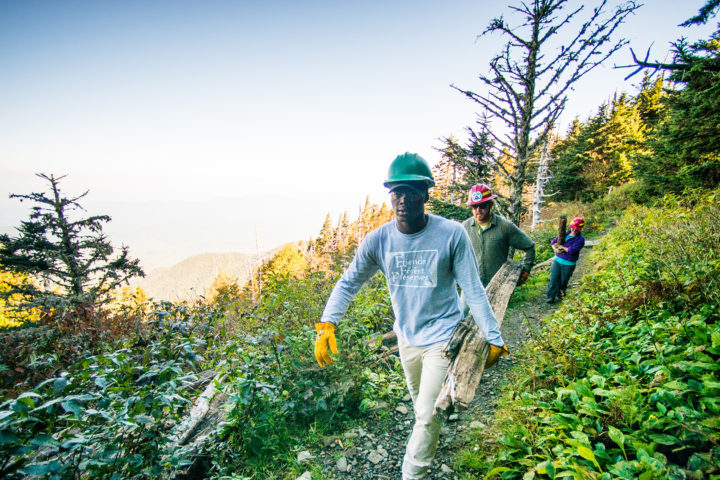
BECOME AN A.T. STEWARD
Volunteer
Volunteers are the heart and soul of the Appalachian Trail. We have plenty of opportunities for you to give back to the Trail you love so much.
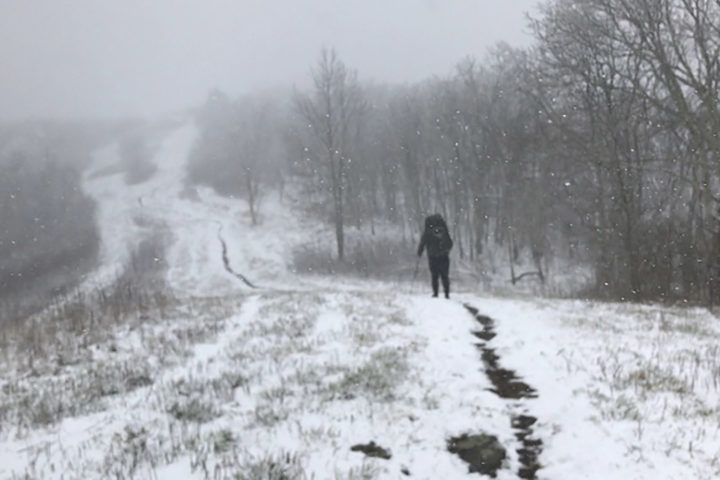
Plan and Prepare
Trail Updates
Know before you go — be aware of the latest Appalachian Trail conditions, weather advisories, and reroutes/closures.
